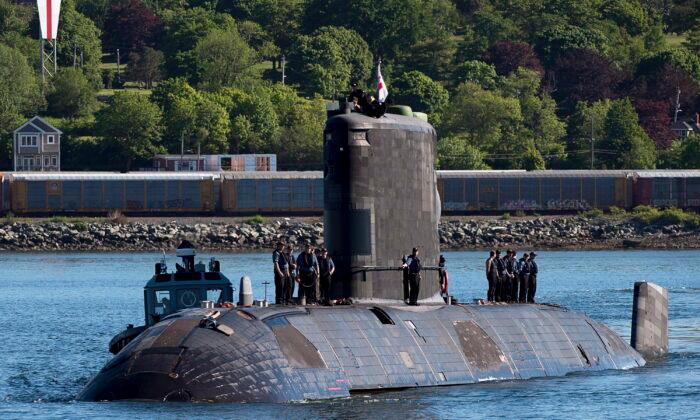After Russia invaded Ukraine in February 2022, the Canadian Armed Forces (CAF) came to realize it was lacking such equipment as anti-tank missiles and long-range precision missile systems, as well as systems to protect against drones.
“The big challenge we face in Canada is that there is still this underlying element of our political leadership that basically thinks that war is not thinkable,” said defence policy expert Robert Huebert, an associate professor of political science at the University of Calgary, in an interview.
“There’s this reluctance to acknowledge that, in fact, war—as ugly as it is—does remain a constant, ongoing element of the international system, and that Canada is not immune to that just because we’re Canadians.”
Defence Equipment Needs
However, the purchase of the F-35 jets merely scratches the surface of Canada’s all-around defence needs, says Huebert.“We need to modernize the surface component of the navy, and we need to modernize and rebuild our submarine capability,” he said. “On the maritime side, those are the two biggest pieces, but we also have to integrate the systems to be aware of the the developing maritime threat environment.”
Huebert questions whether CAF has the necessary technology below the water’s surface to respond to “new, much smaller, much faster underwater autonomous vehicles.”
“In the North, we’re now talking about modernization of NORAD [North North American Aerospace Defense Command], but no discussion about the underwater dimension of that,” he said.
The treaty includes plans by the United States and Britain to provide nuclear submarine technology to Australia.
James Fergusson, deputy director of the University of Manitoba’s Centre for Defence and Security Studies, says Russia’s invasion of Ukraine has also shown that Canada needs to upgrade its defence capabilities against long-range and medium-to-short-range strike missile systems.
Fergusson says there are a number of air-launched and ground-launched missile systems Russia has used to strike long-range targets in the heart of Ukraine.
He adds that Canada’s missile defence system investments made thus far cover only “relatively short-range to medium-range incoming missiles.”
“They don’t have long-range capability at all, and to go into that world [of long-range missile defence systems] is going to cost you a lot of money,” Fergusson told The Epoch Times.
Air and Land
Purchase of the F-35 jets represents significant progress for Canada’s air defence capabilities, but it still leaves certain issues lingering, says Huebert.“You’re not buying the F-35 for dogfighting,” he says, referring to close-range aerial combat. “It’s a system-of-system aircraft. In other words, it plugs into an overall attempt to have air dominance.”
This poses the problem of system connectivity with international allies, Huebert said, the lack of which could cause problems with the F-35’s interoperability.
“You have to be working with your allies to make sure that you’re getting the maximum out of your system.”
While Canada’s F-35 investment strengthens its future air defence, it leaves some questions unanswered in terms of land defence, Huebert notes.
“I would suspect that one of the greatest difficulties we face is just in terms of your basic equipment to protect your ground troops. Do you have enough so that you can send them into a modern battlefield?”
Another lesson learned from the war in Ukraine is the ongoing importance of ground troops and their strategies despite the advances of missile and air technology in modern warfare, Huebert said.
Arctic Security
Surveillance of Canada’s Arctic territory recently came into focus following a November 2022 report by Auditor General Karen Hogan that said aging equipment is jeopardizing Canada’s ability to effectively monitor the region.The report also said that traffic in Canadian Arctic waters has more than tripled since 1990 and reached all-time highs in 2019 and 2020, despite temporary bans on entering the area during the pandemic.
“The ability to be able to surveil the Arctic and monitor what’s happening requires tools, whether it be vessels or aircrafts or satellites or infrastructure. … All of those are aging,” Hogan told reporters.
“The new generation of threat, which is the hypersonic vehicle threat—which flies in the lower regions of outer space above everyone—it cannot detect that at all,” he said, adding that the North Warning System was originally designed to detect possible Soviet bomber incursions.
“We’re almost blind up north,” Fergusson said.
“They’re not going to come in and invade an island,” he said, adding that he believes China’s main objective in the Arctic will be to disrupt international norms and also to “challenge American naval hegemonic control.”
“If a Chinese submarine can pop up here or there, the Americans then have to take that into their planning considerations,” he said. “Just the mere presence is a problem.”





